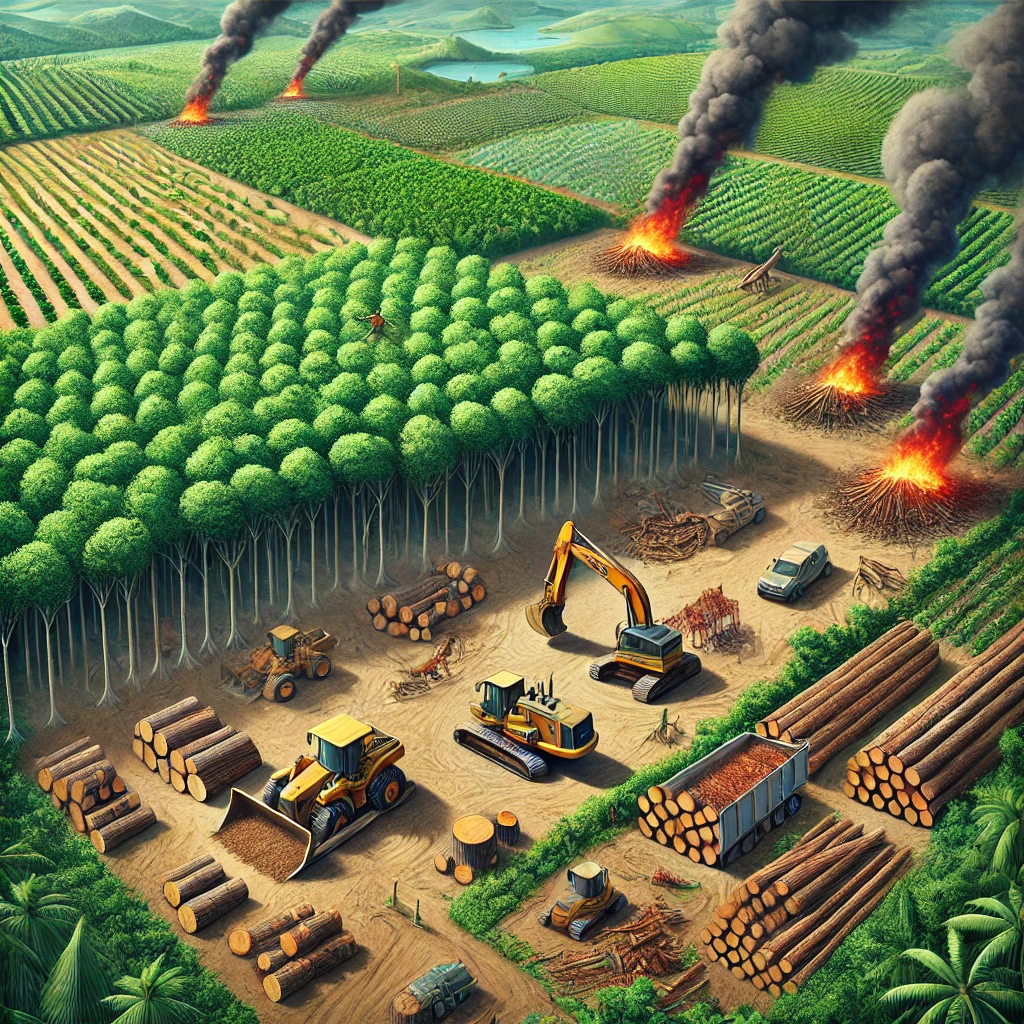What causes Deforestation?
Article Source: Deforestation: Causes, Effects, and Control

Why You Should Care
Deforestation affects the planet by reducing biodiversity, altering weather patterns, and accelerating climate change. Forests absorb carbon dioxide, provide oxygen, and support diverse ecosystems. Without them, the balance of nature is disrupted, leading to severe environmental consequences like habitat loss, floods, and rising temperatures.
Answering the question… What causes Deforestation?
Deforestation happens primarily due to human activities. Large-scale agriculture, like cattle ranching and palm oil production, accounts for nearly 80% of global deforestation. Logging for timber, infrastructure development, and urbanization are other major causes. In Brazil, for example, deforestation in the Amazon has destroyed over 750,000 square kilometers since the 1970s, largely driven by these factors.
How was the study done?The researchers analyzed historical data on forest cover, satellite imagery, and environmental impact reports from different regions. They also examined case studies from countries with high deforestation rates, such as Brazil and Indonesia, to understand the primary causes. This analysis was supported by scientific literature and reports from environmental organizations to map the main drivers of deforestation.
What Was Discovered?
- Agricultural Impact: The study found that agricultural expansion is the leading cause of deforestation, accounting for over 80% of global forest loss. Crops like soybeans, oil palm, and sugarcane are driving much of this expansion, particularly in tropical regions like the Amazon. Between 2000 and 2010, 32 million acres of forest were cleared annually for agriculture.
- Logging and Wood Extraction: Illegal logging contributes significantly to deforestation, with an estimated 15% of all wood products sourced from illegal activities. The commercial logging sector, including paper and furniture industries, causes millions of hectares to be deforested each year, leading to the destruction of biodiversity-rich areas.
- Infrastructure Development: Urbanization and infrastructure projects, including roads, dams, and mining operations, account for 17% of total forest loss. The creation of roads often opens previously inaccessible areas to agricultural expansion and further deforestation.
- Biodiversity Loss: Forests house 80% of Earth’s terrestrial species, and deforestation is causing biodiversity to plummet. An estimated 100 species go extinct daily as habitats shrink. Large-scale deforestation threatens keystone species like jaguars and orangutans, pushing them to the brink of extinction.
- Carbon Emissions: Deforestation contributes around 15-20% of global greenhouse gas emissions. The study found that tropical deforestation alone released about 1.5 billion metric tons of carbon into the atmosphere annually, increasing the pace of global climate change.
Why Does It Matter?Deforestation accelerates climate change, reduces biodiversity, and disrupts the natural balance of ecosystems. The loss of forests weakens Earth's ability to absorb carbon dioxide, leading to more severe weather patterns, rising sea levels, and loss of livelihoods for communities dependent on forests. By understanding the causes and impacts, we can take steps to protect these critical ecosystems and ensure a sustainable future for the planet.
Link to the full article: Deforestation: Causes, Effects, and Control.
